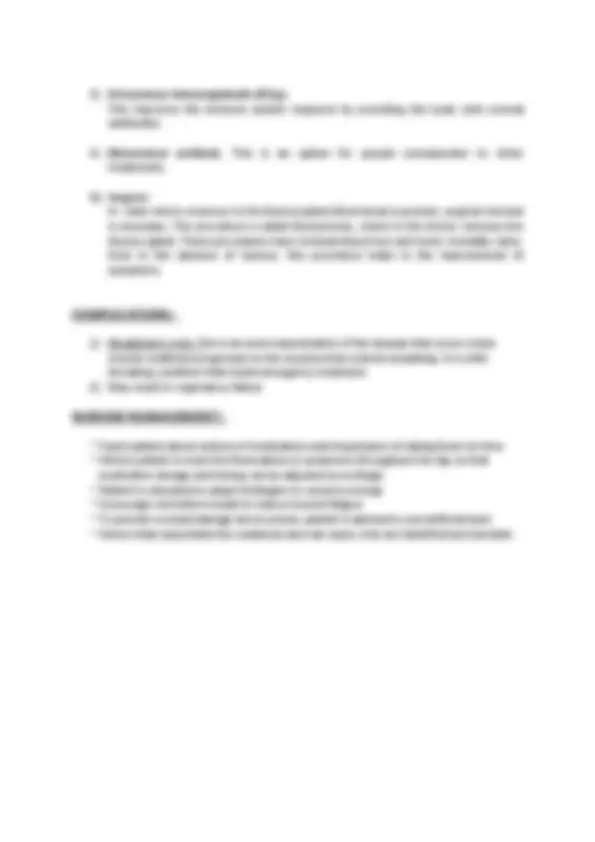



Study with the several resources on Docsity

Earn points by helping other students or get them with a premium plan


Prepare for your exams
Study with the several resources on Docsity

Earn points to download
Earn points by helping other students or get them with a premium plan
Community
Ask the community for help and clear up your study doubts
Discover the best universities in your country according to Docsity users
Free resources
Download our free guides on studying techniques, anxiety management strategies, and thesis advice from Docsity tutors
NURSING MANAGEMENT OF PATIENT WITH MYASTHENIA GRAVIS : - CAUSES, CLINICAL MANIFESTATIONS, SYMPTOMS, COMPLICATIONS, ASSESSMENT AND DIAGNOSTIC FINDINGS, MANAGEMENT
Typology: Lecture notes
1 / 3

This page cannot be seen from the preview
Don't miss anything!


Myasthenia Gravis is a Latin term meaning Grave Muscle Weakness
MG is an autoimmune disorder affecting the myoneural junction (also called neuromuscular junction) and is characterised by varying degrees of weakness of voluntary muscles The weakness of skeletal muscles worsens upon exertion and improves after rest periods. Myasthenia gravis results from failure or error in transmission of impulses between nerves and muscles. Although it is a relatively rare condition, myasthenia gravis can affect people of all ages, and is most commonly seen in women younger than 40 years old and in men above 60 years old. At present, there is still no cure for myasthenia gravis, but treatment aims in relieving signs and symptoms and improving the patient's quality of life.
Autoantibodies directed at acetylcholine receptors: Muscles and nerves communicate through neurotransmitters, which are chemicals released by the nerves and matches into the receptor sites found in the neuro-muscular junction. When a continuous problem in this process of transmission occurs, myasthenia gravis can develop. The immune system blocks the receptor sites for a neurotransmitter called acetylcholine by producing antibodies. Less receptor sites cause insufficient acetylcholine secretion and fewer nerve signals result in muscle weakness. These antibodies also block protein function and tyrosine kinase, a protein enzyme associated in the formation of neuro-muscular junction.
- Muscle weakness with activity- hallmark sign
1) Anti cholinesterase Inhibitor Test It is done by iv administration of edrophonium chloride to the patient .Then assess the patient after 30 seconds , facial muscle weakness and ptosis should resolve for about 5 minutes 2) Ice Test Ice pack is placed over patient's eye for 1 minute. Ptosis should resolve temporarily. 3) Repetitive Nerve Stimulation Demonstrates a decrease in successive action potentials 4) Magnetic Resonance Imaging May demonstrate enlarged thymus gland
1) Pharmacologic Therapy